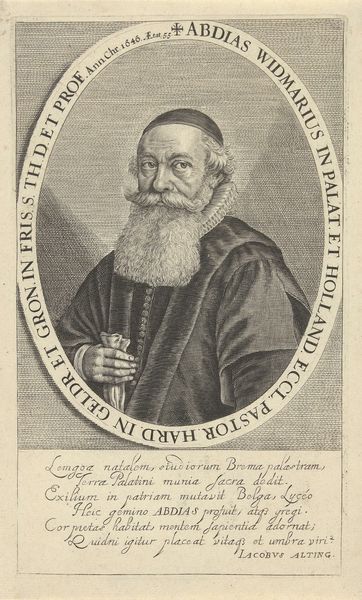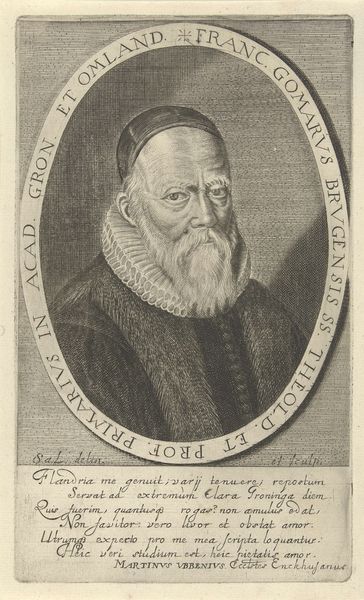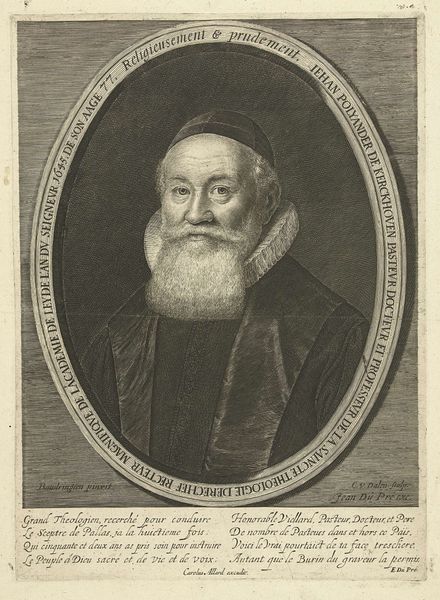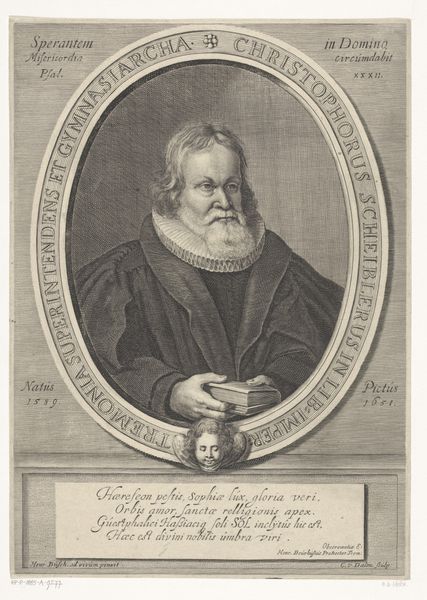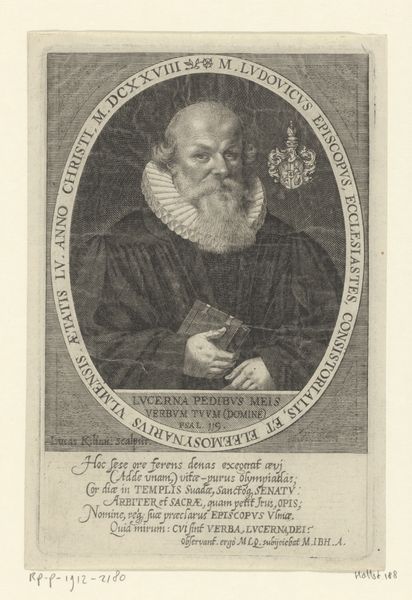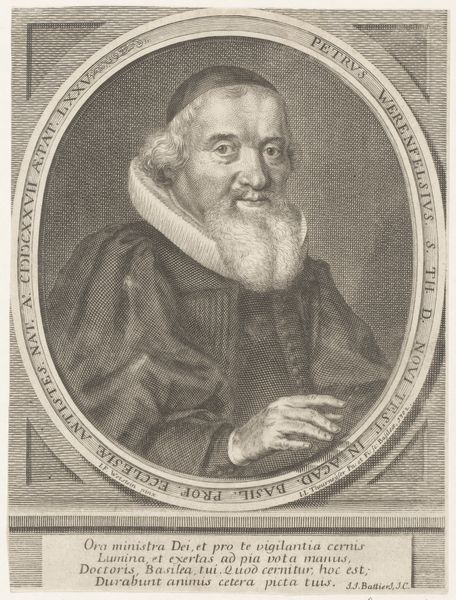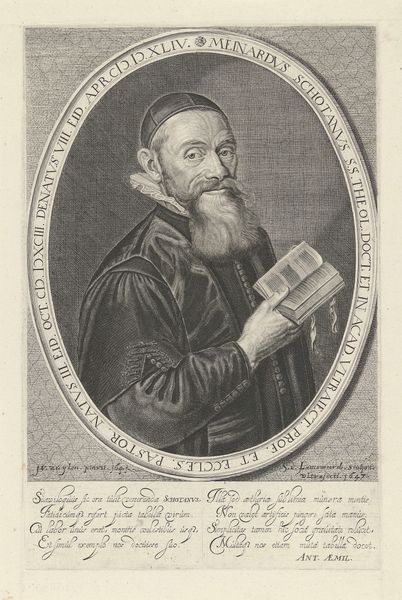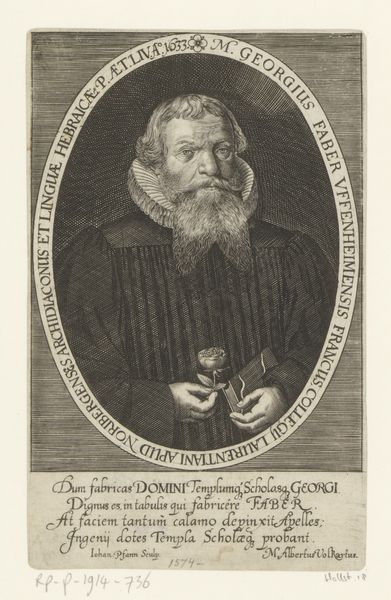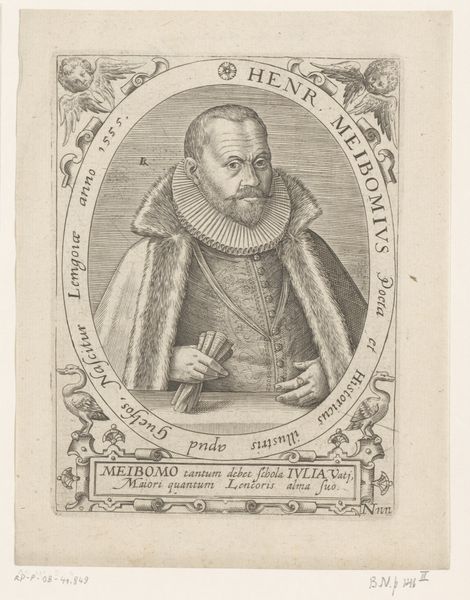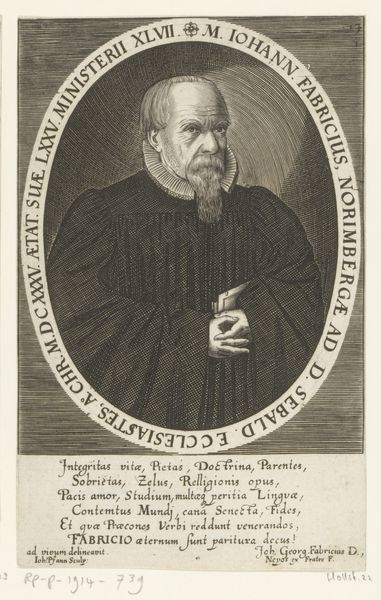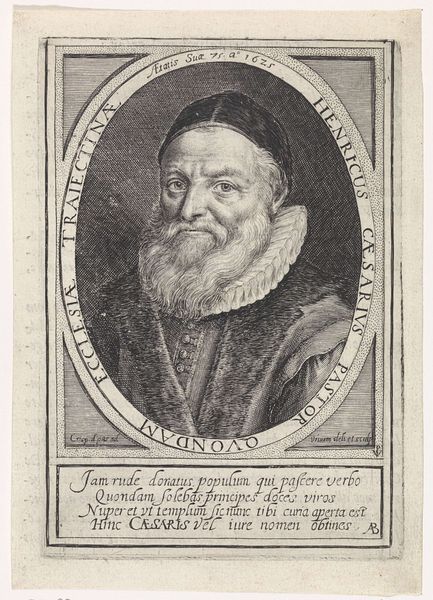
print, metal, etching, engraving
#
portrait
#
baroque
# print
#
metal
#
etching
#
old engraving style
#
history-painting
#
engraving
Dimensions: height 293 mm, width 192 mm
Copyright: Rijks Museum: Open Domain
Curator: This image, titled *Portret van Andreas Suavius*, comes to us from 1648. It's a Baroque-style print, created using metal, and employing both engraving and etching techniques by Steven van Lamsweerde. What are your initial impressions? Editor: The figure looks solemn, almost severe, but not unkind. There's an intense focus in the eyes and a commanding stillness about the posture. It feels quite formal and reserved, of its era. Curator: Indeed. Andreas Suavius, as inscribed around the portrait oval, was a pastor. Note the Latin inscription: "PASTOR, ANNO ÆTATIS SVA 63, MINISTERY 42"—at 63 years of age and 42 years in ministry. It sets the stage, doesn’t it? It's as much a symbolic statement about longevity and dedication as it is a depiction of an individual. Editor: Precisely. And the symbols underscore that. Consider his attire—simple yet dignified. The cap, the somber robe, the starched ruff. It tells us about his standing in the religious community, projecting authority, but also humility. Curator: The meticulous rendering, down to each line in his face, seems to speak to a Baroque sensibility focused on detail as symbolic of larger truths. Age etched on his face mirroring the years he gave to service, subtly reinforcing religious virtues. Editor: It's interesting how printmaking allowed for wider dissemination of such portraits. Think of the role this image would have played – reminding congregants of their pastor's presence, his moral standing, and his religious symbolism. It’s powerful propaganda through a reproducible image. Curator: Absolutely. Print served not just an aesthetic function, but also a civic and ideological one, shaping public perception and memory. Look closely at the border and lettering too—even the very fine background netting helps contextualize the meaning in time and space. Editor: It definitely speaks volumes about the era’s sensibilities and the societal role of portraiture beyond mere likeness. I can't help but wonder what Suavius himself thought of it. Was it an accurate representation, a flattering idealization, or simply a functionary object? Curator: That is a question for our contemporary viewers now, but I also suspect that what makes an image endure goes far beyond intention. It lies in how it becomes entangled in networks of meanings across time. Editor: Precisely. It is the power of symbols to hold meaning across generations that gives this image resonance. Curator: A fascinating piece, showcasing both the power of image and the history it can reveal. Editor: Indeed, a potent symbol caught in time.
Comments
No comments
Be the first to comment and join the conversation on the ultimate creative platform.
